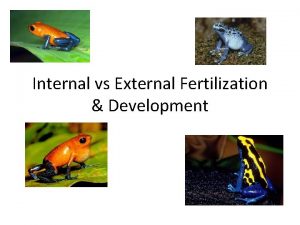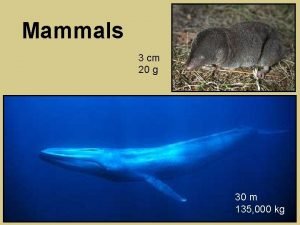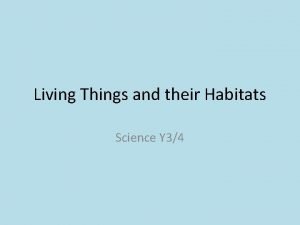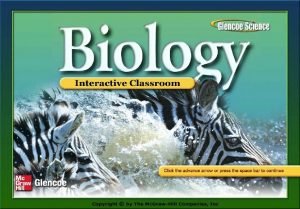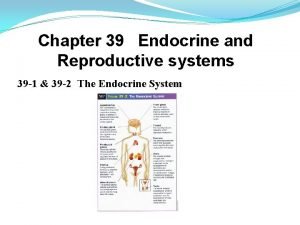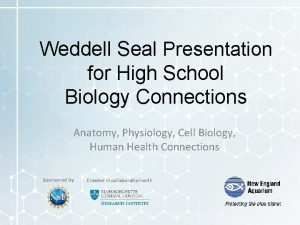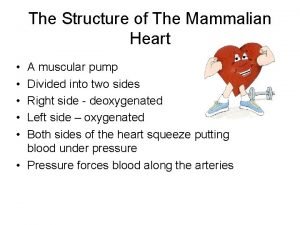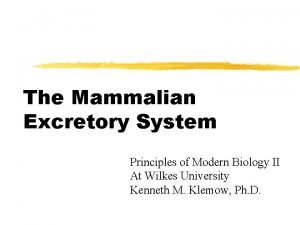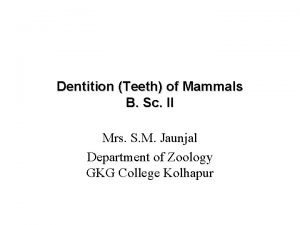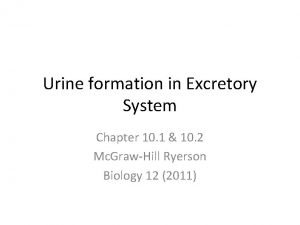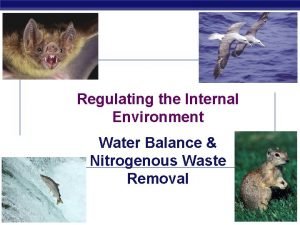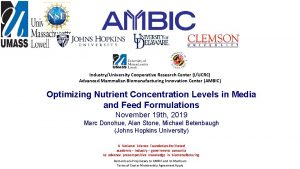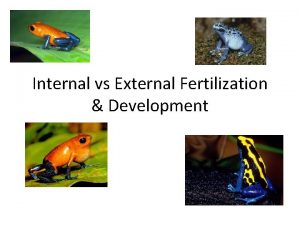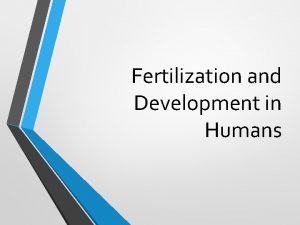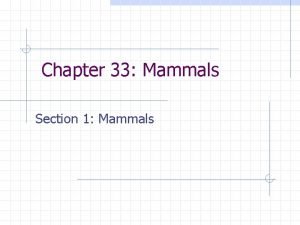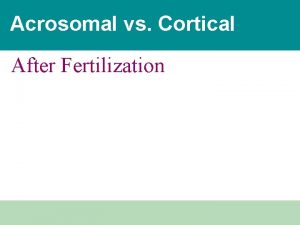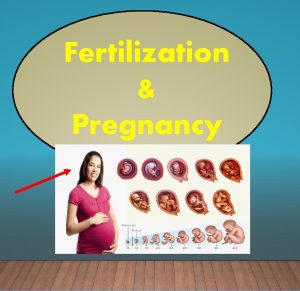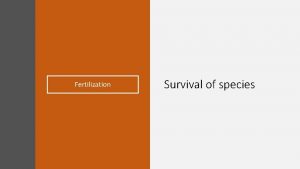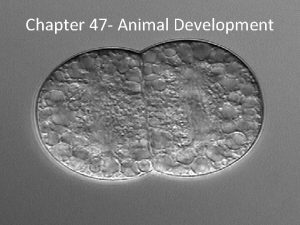Chapter 47 Animal Development Fertilization in mammals Mammalian











- Slides: 11

Chapter 47 Animal Development

Fertilization in mammals

Mammalian Fertilization 1. Sperm binds to receptors in zona pellucida (extracellular matrix of egg) 2. Acrosomal reaction: sperm releases hydrolytic enzymes to digest z. p. (Sea Urchins) Depolarization of membrane: prevent other sperm from binding = fast block to polyspermy 3. Sperm + Egg Nuclei Fuse 4. Cortical reaction: sperm + egg fusion triggers release of Ca 2+ Ø cortical granules fuse with z. p. hardens to form fertilization envelope = slow block to polyspermy 5. Ca 2+ release also triggers activation of the egg

Cleavage: rapid mitotic cell division • Zygote cytoplasm partitioned into smaller cells (blastomeres) • Blastula (hollow ball of cells) filled with fluid (blastocoel)

Early human embryonic development

Amniotic embryos (reptiles, birds, mammals) • Develop in fluid-filled sac w/in a shell or uterus • Amnion: fluid protects embryo – prevent dehydration, cushions mechanical shock • Yolk : nutrients in egg • Mammalian eggs: little stored food Amnion Allantois Embryo Amniotic cavity with amniotic fluid Albumen Shell Yolk (nutrients) Chorion Yolk sac

Gastrulation: rearrange cells to form 3 -layered embryo w/primitive gut Three Embryonic Germ Layers* Ectoderm Mesoderm Endoderm • Skin, nails, teeth • Lens of eye • Nervous system (brain, spinal cord) • Skeletal, muscular • Epithelial linings of systems digestive, respiratory, excretory tracts • Notochord • Liver, pancreas • Excretory, circulatory • Reproductive system • Blood, bone, muscle

CROSS SECTION SURFACE VIEW Animal pole Blastocoel Gastrulation in a frog embryo Vegetal pole Dorsal lip of blastopore Dorsal tip of blastopore Blastula Blastocoel shrinking Archenteron Ectoderm Mesoderm Endoderm Blastocoel remnant Key Future ectoderm Future mesoderm Future endoderm Yolk plug Gastrula

Neural folds Eye Neural fold 1 mm Neural fold Tail bud Neural plate SEM LM Somites Neural tube Notochord Neural plate Neural crest Coelom 1 mm Neural crest Somite Notochord Ectoderm Outer layer of ectoderm Mesoderm Endoderm Archenteron Neural crest Archenteron (digestive cavity) Somites Neural plate formation Neural tube Formation of the neural tube Early organogenesis in a frog embryo

Organogenesis: development of 3 germ layers into organs • Notochord – stiff dorsal skeletal rod, forms from mesoderm • Neural plate neural tube brain and spinal cord • Neurulation – forms hollow dorsal nerve chord • Somites – blocks of mesoderm arranged along notochord; sign of segmentation

Patterns of development • Cytoplasmic determinants: chemical signals such as m. RNAs and transcription factors, influence pattern of cleavage • Induction: interaction among cells that influences their fate, cause changes in gene expression • Totipotent cells: capable of developing into all the different cell types Ø all cells of mammalian embryos are totipotent until the 16 -cell stage
 Internal vs external fertilization
Internal vs external fertilization Mammals and non mammals
Mammals and non mammals Animal without backbone
Animal without backbone Mammals characteristics
Mammals characteristics Section 39-4 fertilization and development
Section 39-4 fertilization and development Glycolyaia
Glycolyaia Mammalian heart diagram
Mammalian heart diagram The mammalian excretory system
The mammalian excretory system Dentition in mammals
Dentition in mammals Mammalian excretory system
Mammalian excretory system Mammalian excretory system
Mammalian excretory system Mammalian biomanufacturing
Mammalian biomanufacturing
